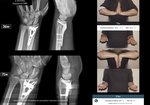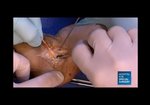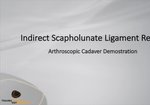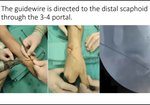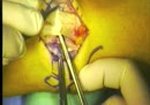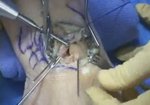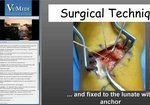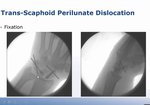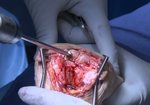Video Player is loading.
Current Time 0:00
/
Duration 0:00
Loaded: 0%
Stream Type LIVE
1x
- 0.5x
- 0.75x
- 1x, selected
- 1.25x
- 1.5x
- 1.75x
- 2x
- Chapters
- descriptions off, selected
- captions settings, opens captions settings dialog
- captions off, selected
This is a modal window.
Beginning of dialog window. Escape will cancel and close the window.
End of dialog window.
10 seconds
Playback speed
This is a modal window. This modal can be closed by pressing the Escape key or activating the close button.
Arthroscopic Axial and Dorsal Reconstruction of the Scapholunate Ligament (SLAM Technique)
3,724 views
January 31, 2018
Scapholunate (SL) ligament injury is among the most common injuries of the intrinsic ligaments of ...
read more ↘ the carpus.
Arthroscopic treatment in complete and nonacute injuries has had poor results. These cases have typically been treated using open surgical techniques that require a broad dorsal approach and produce soft tissue impairment, which leads to reduced wrist mobility. The development of wrist arthroscopy techniques has allowed the treatment of complete and nonacute injuries of the SL ligament, without the disadvantages of open surgery, respecting the soft tissues and avoiding injury of the posterior interosseous nerve, in an attempt to preserve the proprioception of the wrist and the secondary dorsal stabilizers. This all arthroscopic technique reconstructs the SL ligament using a tendon graft placed between the scaphoid and lunate and complemented by the reconstruction of the dorsal portion of the SL ligament, with the aim of creating an axial and dorsal tendinous ligamentoplasty between both bones.
The technique is indicated for patients with a recent subacute or chronic injury, with competent secondary stabilizers, and without cartilaginous involvement (dynamic
scapholunate instability), as well as for cases with an easily reducible static instability as classified by Garcia-Elias. Unreducible instability,lunotriquetral instability,and osteoarthritis in the radiocarpal or midcarpal joint will contraindicate the technique
↖ read less
read more ↘ the carpus.
Arthroscopic treatment in complete and nonacute injuries has had poor results. These cases have typically been treated using open surgical techniques that require a broad dorsal approach and produce soft tissue impairment, which leads to reduced wrist mobility. The development of wrist arthroscopy techniques has allowed the treatment of complete and nonacute injuries of the SL ligament, without the disadvantages of open surgery, respecting the soft tissues and avoiding injury of the posterior interosseous nerve, in an attempt to preserve the proprioception of the wrist and the secondary dorsal stabilizers. This all arthroscopic technique reconstructs the SL ligament using a tendon graft placed between the scaphoid and lunate and complemented by the reconstruction of the dorsal portion of the SL ligament, with the aim of creating an axial and dorsal tendinous ligamentoplasty between both bones.
The technique is indicated for patients with a recent subacute or chronic injury, with competent secondary stabilizers, and without cartilaginous involvement (dynamic
scapholunate instability), as well as for cases with an easily reducible static instability as classified by Garcia-Elias. Unreducible instability,lunotriquetral instability,and osteoarthritis in the radiocarpal or midcarpal joint will contraindicate the technique
↖ read less
Comments 12
Login to view comments.
Click here to Login










